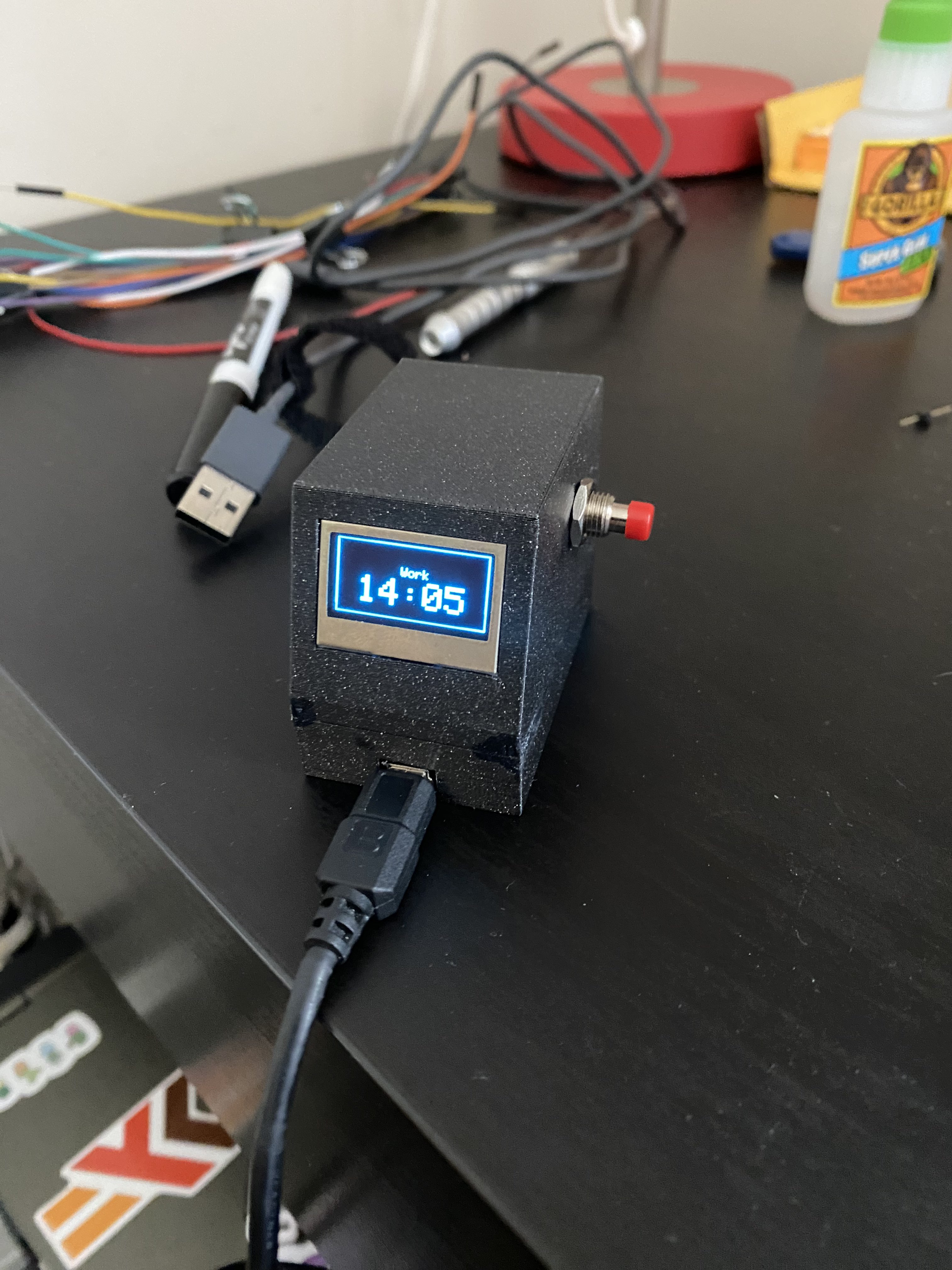that is, except for the i2c address of the screen. i was losing my mind because the datasheet for my screen says the address is 0x27, the actual physical device has 0xA7 printed on it, but it turns out the actual address is 0x3C. i feel like i must have some fundamental misunderstanding of how i2c works because example code from the manufacturer of the screen uses 0x27 perfectly fine, while also most online documentation of the adafruit ssd1306 library tells you to use 0x3C as the address, which ended up being correct (despite the adafruit sample code saying to use 0x3C for 128x32 displays, not x64). oh well.
i debated adding a buzzer that would sound when the timer was up, but it came down to fitting the components into the shell i had already printed. in theory there was enough space inside the thing but i was using (self)shortened dupont wires to connect the screen and the nano because i didn't want to solder directly onto breakout pins. the wires were bending and because they were so short they were hard to get far enough out of the way to fit the buzzer and its three wires as well. i then debated sticking an LED out of the other side of the display, mirroring the button, that would blink as some indicator that the time was up, but i ended up just putting it together as-is. in retrospect i wish i had put the LED in. i tend not to notice when the time is up.
picture:

source files: model.FCStd (freecad model, top and bottom halves are two separate bodies) - pomodoro_code.ino - uses the arduino ide's package manager to install the Adafruit SSD1306 library and its dependencies (should include the Adafruit GFX library).
parts list:
- elegoo arduino nano clone - works just like the nano, way cheaper, had a few i wasn't using so i didn't mind gluing one in a PLA sarcophagus
- 0.96in 128x64 oled screen - uses i2c, the source of the original no longer sells it but this one
this one should work, along with the million other ssd1306 screens out there that do exactly the same thing and
probably have a similar footprint. this one doesn't have mounting holes, which would have made it a
little easier to secure the screen inside, but i just used some superglue to hold it in place because
i am too lazy to design something better.
a note to anyone making a screen mount: the display size is measured DIAGONALLY, not horizontally (i.g. the display is 0.96in measured from corner to corner). hopefully this saves you a re-print. - generic momentary button - the button i used is really generic, it's nice because it has a mounting nut which meant i didn't have to glue the button on and could just screw it in instead. this is one of a thousand places to buy these exact buttons, but literally any button that doesn't lock down will work.